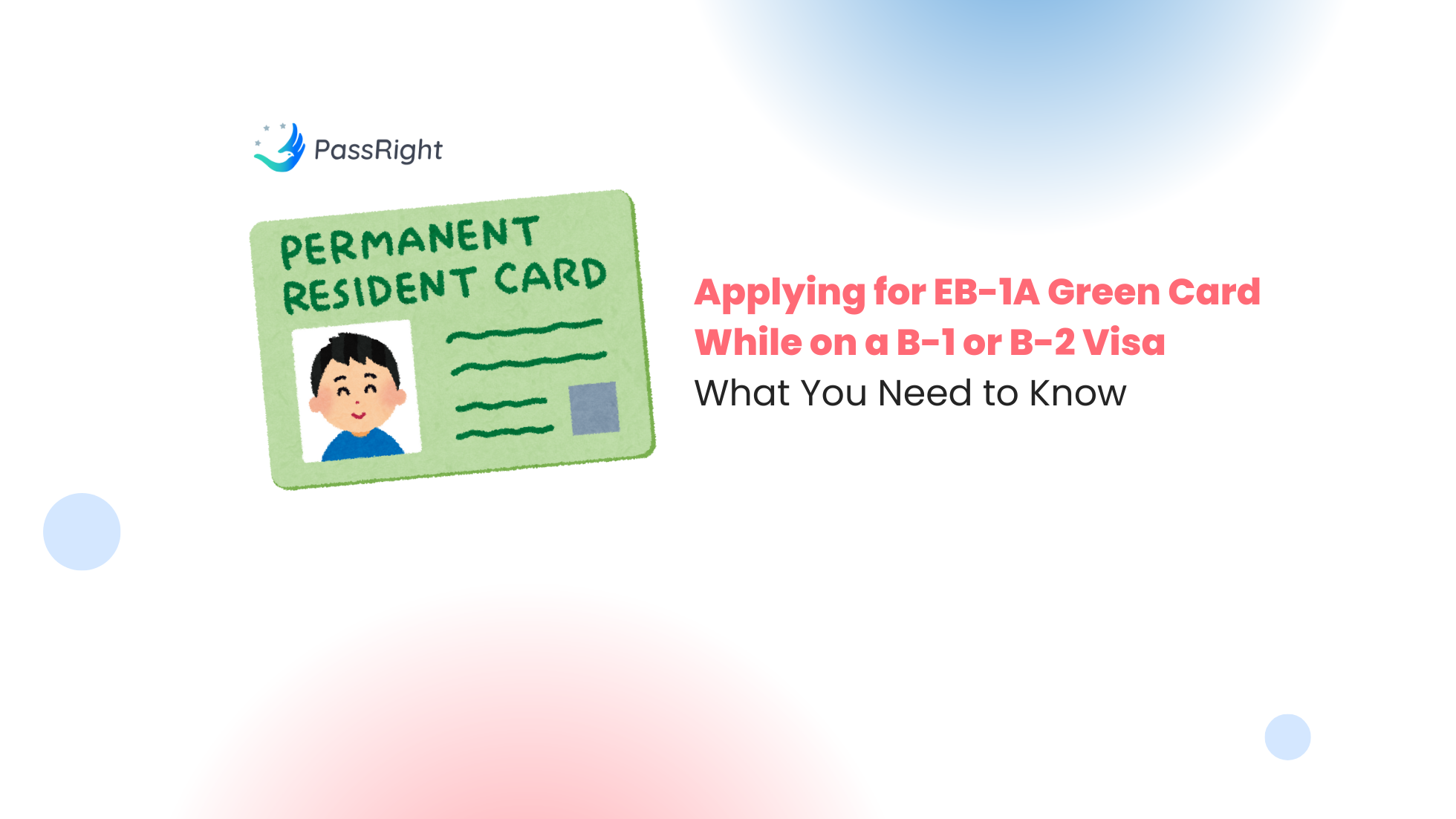Many B-1 and B-2 visa holders consider the EB-1A visa as a potential pathway to secure a green card. Applying for an EB-1A visa while on a B-1/B-2 visa requires careful planning and a solid understanding of the U.S. immigration system.
This article offers valuable insights, but it should not be considered legal advice. For personalized guidance regarding your immigration situation, we recommend consulting an immigration attorney. If you’d like to speak with our lawyer, you can easily schedule a call with us.
What is the EB-1A Visa?
Let’s start with what the EB-1A visa is all about. It’s a green card designed for individuals who are truly exceptional in their field—whether that’s the arts, sciences, education, business, or athletics. This visa is meant for those at the very top of their game, and qualifying requires proving you’ve achieved something extraordinary.
To be eligible, you need to provide strong evidence of your accomplishments and meet at least three out of the ten criteria set by USCIS.
While the EB-1A offers a pathway to permanent residency for those with extraordinary achievements, the B-1 and B-2 visas are designed for temporary visits to the U.S., often serving as a first step for professionals and visitors exploring opportunities.
What are the B-1 and B-2 Visas?
The B-1 and B-2 visas are nonimmigrant visas for temporary visits to the U.S.:
- B-1 Visa: For business purposes
- B-2 Visa: For tourism or personal visits
B visa holders are typically allowed to stay in the U.S. for up to six months at a time. These visas are granted with the expectation of nonimmigrant intent, meaning the holder intends to leave the U.S. after their temporary stay.
Can You Apply for EB-1A While on a B-1 or B-2 Visa?
it is possible to apply for an EB-1A visa while in the United States on a B visa. However, B-1 and B-2 visas are not issued with dual intent (the ability to pursue both temporary and permanent residency). Applying for a green card while on a B visa may raise questions about your original intent upon entering the U.S. Thus, if plans change and you would like to explore applying for a green card from within the US, while being on B status, it is important to consult with immigration attorney who will help you take all the steps properly.
Filing the EB-1A Petition
In some cases, you may file Form I-140 (the EB-1A petition) and Form I-485 (adjustment of status) concurrently if your priority date is current according to the visa bulletin. This strategy can expedite the process but requires careful timing and proper documentation to avoid delays or denials.
Key Tips for Immigration Success: Navigating the Application Process
Consult with an Immigration Attorney
The U.S. immigration system is complex and requires strategic planning. An experienced immigration lawyer can guide you through the EB-1A process, help address dual intent concerns, and provide advice on the best approach for your situation.
Provide Strong Evidence
Your EB-1A petition must clearly demonstrate your extraordinary ability. Focus on quality over quantity when submitting evidence, and ensure all documentation is well-organized and relevant.
Maintain Lawful Status
Adhere strictly to the terms of your B visa. Avoid unauthorized work or overstaying your visa to prevent jeopardizing your green card application.
Plan for Potential Delays
Processing times for EB-1A petitions and adjustment of status can vary. Account for these delays in your timeline and be prepared for potential travel restrictions.
Conclusion
Deciding to apply for an EB-1A while on a B-1 or B-2 visa requires careful planning and attention to detail. Invest time in gathering thorough and compelling evidence that speaks for itself. A well-prepared petition can make all the difference. Consulting an experienced immigration advisor can help you avoid mistakes and streamline the process – it’s an investment in your future in the United States
Complete our free evaluation questionnaire to find out if you qualify for EB-1. Our attorneys and customer care team will guide you through your eligibility and the next steps.
You can also schedule a call with our customer care team to learn more about how our attorneys can assist you with your case.









